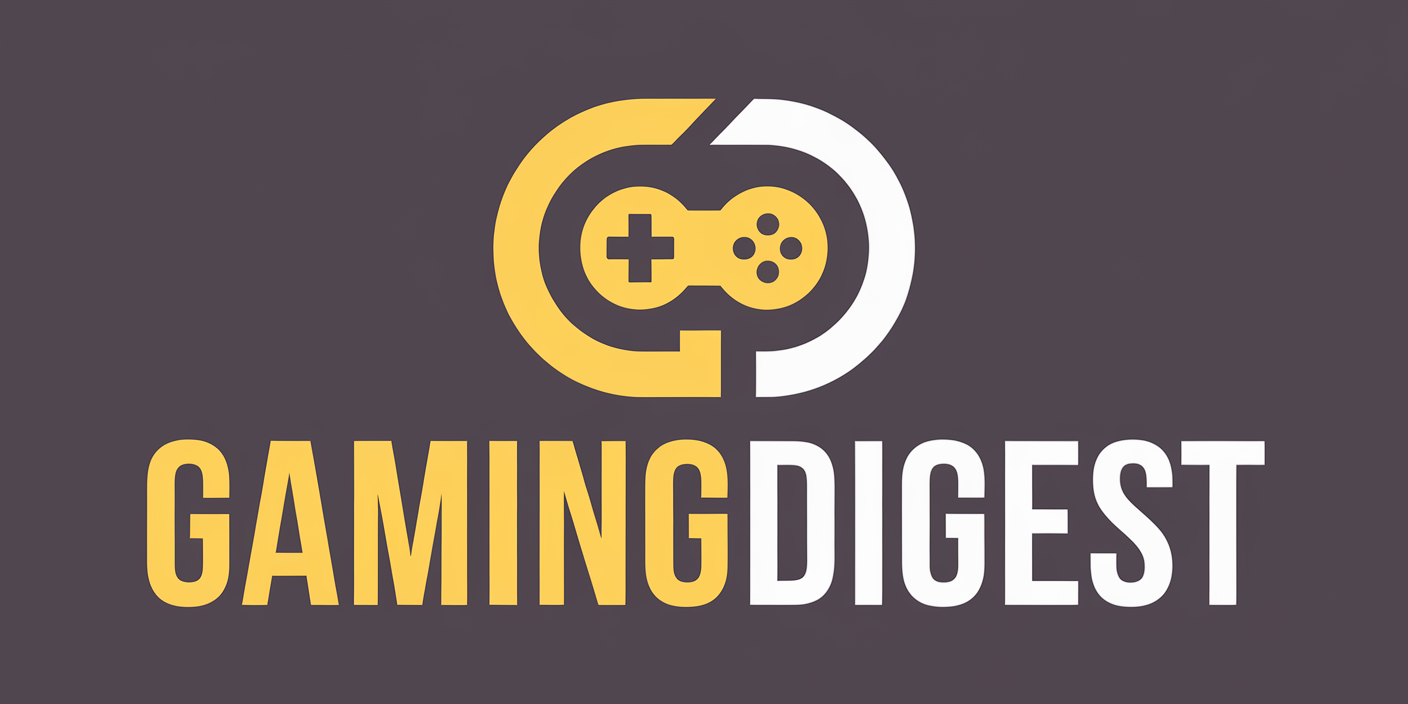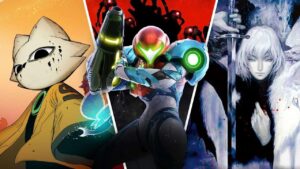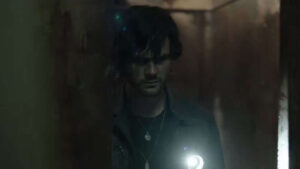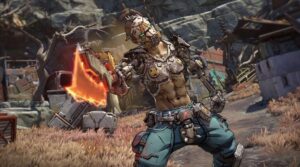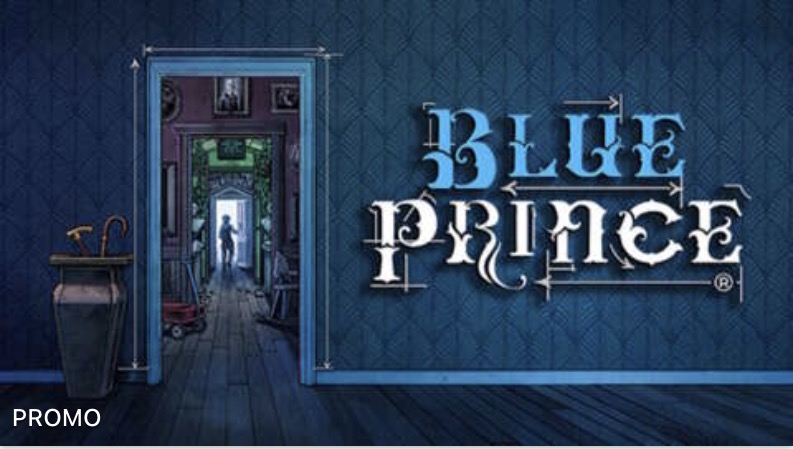Though the names Street Fighter and Mortal Kombat certainly aren’t new, the newest installments in each franchise has reinvented the tenured fighting series’ in different ways–one with a fresh coat of hip-hop-infused paint, the other with a total reboot of its lore.
Fatal Fury: City Of The Wolves, then, might be expected to try and reinvent its wheel with a similar kind of wild ambition, but it doesn’t stray too far from its Garou roots. At the core of the experience is a mechanically sound fighting system in which skill rises above luck and the thrills of gameplay are heightened by the new REV System, which I find to be one of the most balanced ideas in recent fighting games. That said, the limited ways to explore this new system, coupled with some baffling decisions regarding its roster, makes City Of The Wolves lose some of its bite.
At the core of this new Fatal Fury is the aforementioned REV System, a risk/reward mechanic that can completely change the flow of a match in an instant and leads to some exciting finishes against CPU and human opponents alike. A small, semi-circular meter called the REV Gauge will build up as players use specific moves and abilities, like REV Arts or REV Accel, as well as every time you block.
Rev ARTs work like EX Moves in Street Fighter, enhancing a character’s special attacks for more hits and/or damage. The REV Accel mechanic lets you chain REV Arts together for a potentially massive combo, but at the risk of filling the REV Gauge rapidly and overheating. There’s even a defensive option in REV Guard that is an enhanced block that will create more distance between you and an opponent after blocking a move. But, again, that fills the meter more than standard blocking does. You can bring the meter down by staying mobile and landing normal attacks, which can then open up more opportunities to use these abilities again.
Once that meter hits 100 percent, the character enters the Overheat state, which locks abilities like REV Arts away–you can still block, thankfully–until the meter reaches zero again. If you’re really aggressive, you can fill it as many times as you want during a match, provided you adapt to not having some of your arsenal. You could also go without filling the meter at all, but that requires budgeting the moves that fill it to keep it low, but of course, those abilities are some of a character’s most powerful tools.
The constant measuring of risk versus reward when deciding on an attack in the heat of the moment enhances the entire City Of The Wolves experience. It sounds simplistic, but the amount of options and routes each character has is fascinating once the REV System’s abilities are factored in. On top of that, there are also super moves called Ignition Gears this time around, and mobility mechanics like Feints and Braking, which allows players to press extra buttons during special moves to either fake them or end them early.
There is also the Selective Potential Gear mechanic, or S.P.G. This designates a section of your health bar so that, when you get there, you get a boost in attack power and access to more moves, including the quick and effective REV Blow. Do you want to activate S.P.G as soon as the match begins and go for the throat early, or do you want to save it for the later parts of the match as a comeback mechanic? I changed my mind with every match, yet was never disappointed by the opportunities it offered; it’s a fantastic extra wrinkle in this nuanced fighting system.
Each character on the roster brings an unique approach to the REV System, making the majority of them interesting to explore and experiment with.. Classic names like Terry Bogard and Rock Howard don’t change much in their latest incarnations, but the REV System tweaks their known move sets in a way that makes them feel really neat; the extra tools make them feel new and improved, despite using the same moves they’ve had since the late 1990s. The one new character, Preecha, stands out as one of the most fun characters to play thanks to her unique take on series veteran Joe Higashi’s Muay-Thai-heavy moveset.
Yet the REV System being so fun makes the lack of depth in its mode offerings very disappointing. In number, it doesn’t seem like City Of The Wolves is lacking; it’s got the typical Versus and Training modes, online play offers ranked, casual, and private room matches, and there are two different ways to explore each character’s backstory via Arcade mode and a new “campaign” mode called Episodes Of South Town. A lot of these are standard fare for fighting games, yes, but they don’t reinvent the wheel.
The Arcade Mode is seven matches in a sequence before credits roll. Versus matches, by their nature, are single exhibitions that don’t last very long. Training is great for those who like to grind and learn every little nuance about their characters, but that’s not everyone. I’d love to tell you how the online scene is functioning, but the servers for PlayStation reviewers still haven’t fully activated as of this writing. (this review will be updated once they are). They’re fun, and they’re what I’d expect from a fighting game, but after a while I wanted something different.
The “something different” in Fatal Fury is Episodes Of South Town, but unfortunately it also doesn’t grip me as much as I’d hoped. Here, you’ll choose a character, then explore areas of the titular South Town, each with markers on them that offer quick battle challenges. And by “explore” I mean drag a cursor over a marker, select it, and fight a match. Compare this to Street Fighter 6’s World Tour, which features a massive urban world with smaller themed maps, and EOST pales in comparison.
Each character has their own story within EOST, which is cool. However, this means these maps must be completed by every character on the roster individually, and while that adds a lot more playtime, it doesn’t do much for play variety. I kept running into the same generic randos, seemingly created just to be punching bags in this mode, more than the other characters on the roster. All of the missions are virtually the same too; either they’re basic matches or they’ll include some sort of hurdle like “player character is in Overheat for the whole match.”
In fact, there’s one special battle that needs a disclaimer: Hidden in each section of the map is a “Robust Roulette” match. Here, you must fight an opponent that takes no damage at all. Instead, there’s a one-in-66 chance that one of my attacks will deal maximum damage and instantly win me the match. This is a wildly infuriating challenge, as it removes the skill that fighting games thrive on and replaces it with random chance, and it simply does not work.
Fortunately, City Of The Wolves’ overall experience is elevated by its striking American-comic-themed art design, with bright, flashy colors that pop off the screen. A few specific mechanics have some neat visual effects, too: Just Defenses–a parry-like block that must be timed with an opponent’s attack–creates an orb of distorted light around your character, which makes you feel like a million bucks just for timing a block correctly. Activating an Ignition Gear and watching the camera zoom in on your character is great too; they just look incredible in this art style.
However, it is here that I now must address the soccer-playing elephant in the room: This Fatal Fury took a massive hit to its credibility with the addition of two real-world celebrities to the playable roster: Spanish soccer star Cristiano Ronaldo and Swedish DJ Salvatore Ganacci. For some, this was a case of the recent “guest character in fighting games” trend gone berserk.
Ronaldo can only be played in Versus matches, either online or offline. He has no Arcade mode sequence. He cannot be chosen in Episodes Of South Town. He is simply a strange addition to the end of the character select screen. This makes him easily ignored in a single-player session, but it also makes his inclusion feel that much more unnecessary. His moveset is fine, and he makes a great training dummy, but the “hello fellow Fatal Fury fighters” radiating from him is not what you want from a marquee guest character in your fighting game.
Salvatore Ganacci, meanwhile, is an entirely different matter. His moveset is a silly infusion of music and martial arts with some goofy poses invoking Duck King from previous Fatal Fury games. He’s in every mode, including Episodes Of South Town, with a story unique to him that is, admittedly, a hoot. He has his own stage, and the real-world version of him has contributed multiple songs to the game’s soundtrack. Ganacci feels planned, as if he was part of the game’s overall vision right from the get-go, unlike his soccer star associate. If Ganacci were the only guest on this launch roster, while it would be very strange, I ultimately think he would be received well. But the juxtaposition between the two celebrities’ in-game treatment–as well as the controversies surrounding Ronaldo–ultimately sour the experience.
Controversy aside, Fatal Fury has come back in a big way with City Of The Wolves. I can’t get enough of the REV System and its tactical edge to the classic 2D fighting format, as it adds an energy to each match that other fighters don’t have. The roster offers plenty of variety and experimentation, and each member of it looks incredible thanks to the comic-themed style. I just wish there were more to do with these characters that didn’t feel as repetitive as Episodes Of South Town does. A solid online environment may fix this issue for me, but without being able to get online, I can’t definitively say that’s the case yet.
Ultimately, to answer Terry Bogard’s commonly asked “Are you OK?”: Yes, I am OK with Fatal Fury: City Of The Wolves. More than OK, honestly; I’m glad to see it return, and I expect to be traveling to South Town for a good while.
Editor’s note: This review will be finalized in the near future.
